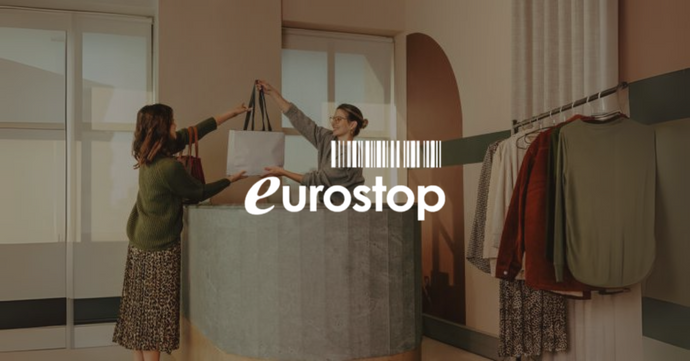You've probably shopped in physical stores, as well as on platforms like Shopee, Lazada, and Taobao, right? Absolutely!
Customers nowadays no longer stick to a single shopping channel. They browse online, visit physical stores, compare prices on mobile apps, and interact with brands on social media before making a purchase.
Omnichannel retailing seamlessly connects these touchpoints, allowing customers to switch between online and offline channels effortlessly. For retailers, adopting an omnichannel strategy streamlines operations and enhances customer satisfaction while driving revenue growth.
But what exactly is omnichannel retailing, and why is it so important? In this article, we’ll explore the key benefits of omnichannel retailing and how it can improve your overall business operations.
What is Omnichannel Retailing?
Omnichannel retailing is a customer-centric approach that integrates all sales and communication channels—online, offline, and mobile—to provide a unified shopping experience. Unlike multichannel retailing, where each channel operates independently, omnichannel retailing ensures that every touchpoint is connected. This enables customers to enjoy consistent service, personalized interactions, and real-time access to products and information.
Simply put, omnichannel retailing is about meeting your customers wherever they are—whether they’re browsing your website, walking into your store, or engaging with your brand on social media—all while providing a cohesive and frictionless experience.
Benefits of Omnichannel Retailing
Now that you understand what omnichannel retail is, let’s take a closer look at its benefits to businesses!
#1 Deliver a Seamless Shopping Experience
Customers expect convenience and consistency in their shopping journey. Omnichannel retailing meets this demand by offering flexible shopping options such as buying online and picking up in-store (BOPIS), returning or exchanging online purchases in-store, or purchasing in-store and having items shipped to their doorstep.
A unified shopping journey enhances the experience by syncing shopping carts and wishlists across devices. Customers can start shopping on one platform, like a mobile app or desktop, and seamlessly complete the purchase on another, such as an in-store terminal or website. This level of convenience not only builds trust but also encourages customer engagement, making it easy for them to browse, purchase, and stay connected with your brand.
#2 More Upsell and Cross-sell Opportunities
An omnichannel strategy unlocks new revenue streams by leveraging customer data for personalized marketing. By analyzing purchase history and browsing behavior, businesses can recommend complementary products, deliver targeted promotions, and drive repeat purchases through email campaigns.
Features like Click-and-Collect bring customers to physical stores, increasing the chances of impulse purchases and overall order values. According to Harvard Business Review, omnichannel shoppers spend 4% more per in-store visit and 10% more online than single-channel customers, making them a valuable segment for long-term growth. With seamless shopping experiences across multiple touchpoints, businesses can maximize sales opportunities and convert more browsers into loyal buyers.
#3 Make Business Operations More Efficient
A fragmented retail system leads to inventory mismanagement, fulfilment delays, and higher operational costs. An omnichannel retail system eliminates these inefficiencies by integrating sales, order, and customer data across all channels.
With a unified system, you can optimize order fulfilment by routing online purchases to the most efficient location—whether from a warehouse, a nearby store, or a distribution center. This localized approach reduces delivery time, which in turn elevates customer satisfaction and loyalty.
#4 Gain Valuable Business and Customer Insights
Your data is no longer fragmented but seamlessly synchronized across all touchpoints with an omnichannel retail system. This integration makes it possible for businesses to access data from both online and offline operations, offering real-time analytics on customer preferences, buying patterns, and product performance. Understanding how customers engage with your brand enables smarter, data-driven decisions to refine marketing strategies, personalize experiences, and optimize inventory management.
By leveraging these insights, businesses can anticipate trends, introduce new products, and proactively meet customer demand—staying ahead in a competitive retail landscape.
#5 Improved Inventory Management
An omnichannel retailing system enables businesses to quickly meet customer demands and minimize delays. With real-time inventory tracking and synchronization across all platforms, businesses ensure accurate stock levels and reduce the risk of overselling or stockouts.
Retailers gain full visibility into stock availability, allowing for efficient management and transfer of stock between stores or warehouses, while smoothly fulfilling online orders.
#6 Expand Market Reach and Penetration
Selling through multiple channels allows retailers to reach a broader audience and grow their customer base. Omnichannel retailing assures businesses can provide a consistent shopping experience across all platforms—whether a physical store, online, or mobile app—regardless of location. This integration helps tap into new markets and boost brand visibility across diverse platforms.
A comprehensive omnichannel strategy opens doors to new opportunities and strengthens a business's competitive edge, fueling sustained growth and long-term success.
Start Omnichannel Retailing with Eurostop
Eurostop’s Omnichannel Retail Management System offers essential functionalities for retail businesses, including inventory management, order management, merchandise planning, and sales management—all in one platform.
Eurostop e-Loyalty (CRM) provides a 360-degree view of customers, automatically updating preferences, interactions, and order history to enhance personalized marketing and support. Moreover, Eurostop’s omnichannel retail solution integrates e-commerce with ePOS and mPOS, ensuring a smooth operation in-store and online.
With all business data centrally managed, Eurostop delivers robust reporting and performance monitoring. Users can generate customized dashboards with key performance indicators (KPIs) and automated reports, gaining both a broad and detailed view of omnichannel operations for better decision-making.
Omnichannel commerce is no longer optional—it's a business imperative. Businesses must go beyond technology and build a clear strategy that streamlines operations, expands sales channels, optimizes supply chains, and prioritizes customer experience at the core of every decision.




